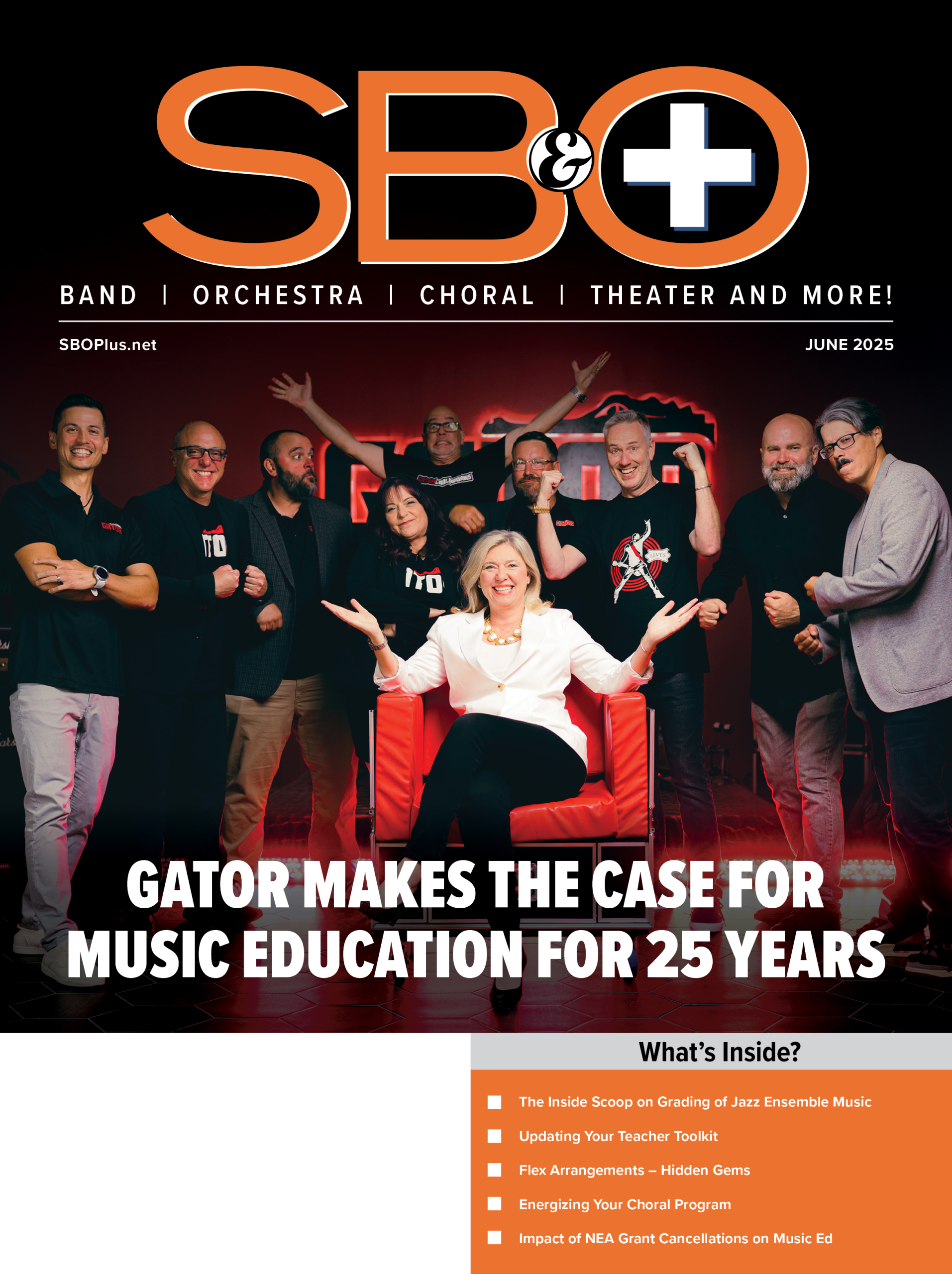Automatic Accompaniment Generating Software: More Home Practicing Recommendations Part Four of Four
Music Minus One (1950) and Jamey Aebersold (1966) were the first to bring the magic of group performance into the practice room with analog play-along recordings and materials. Now, powerful automatic generating software applications have made play-alongs more exciting and accessible. SmartMusic by MakeMusic, with its interactive accompaniments and assessment capabilities, Band-in-a-Box by PG Music, with their extensive play-along accompaniments for more creative teaching and home practice, and StarPlay by In The Chair, with interactive on-line video, are today’s must-see automatic accompaniment generators.
Band-in-a-Box
Band-in-a-Box by PG Music (www.pgmusic.com) has been the nearest thing to “artificial intelligence” in music technology since 1987. It provides incredible opportunities to make customized play-along recordings for students to practice with in school, at home, or on the Internet. Its well-thought out menus and powerful sequencing features offer valuable shortcuts and great teaching opportunities.
Band-in-a-Box is especially good for designing contemporary music play-along accompaniments for jazz band charts. Simply input the chords and select a musical style and – voila! – the software instantly creates an authentic sounding rhythm section accompaniment in any key and tempo for extended play-along practice. This can then be saved as an audio file for playback on the school or band Web site, duplicated on CDs or MP3 files to be distributed to students, or posted on the Internet for students to practice with. Since the music is being Band-in-a-Box generated by the computer, there are no copyright violations for duplicating or distributing the files created.
Band-in-a-Box can also be a handy tool for assessment. Tracks can be recorded at different tempos to boost students’ technical chops. Band-in-a-Box can also generate improvised solos in the style of more than 350 different soloists, to which users (students) can listen and play-along. All the Band-in-a-Box generated parts can be viewed in music notation, listened to, or printed out for the students to analyze and practice. Here’s a dandy idea: feature a student on the school Web site soloing with accompaniments generated by Band-in-a-Box. It’s simple – just save it in MP3 file format for the Internet.
The four-part harmony display in the “Lead Sheet Notation” window is a great shortcut for changing the harmony track. For example, the first Bb note has the other harmony voices playing G (drop 2), F, and D. Now open up the Lead Sheet Options. Select “Show Harmony Voice” (Voice 2) and press OK. Only “Voice 2” of the harmony should now be displayed. Click “Play” and “Voice 2” will be heard along with the other harmonies. Return to the Lead Sheet Options and adjust the “Play Volume of Harmony Voice” to “50% Solo.” Now, “Voice 2” will be played louder than the other harmony voices. Similarly, the volume of the harmony can be turned off by selecting the “Muted” option. Seeing the harmonies like this is great practice for sight reading. Press the “Print” button to print out “Voice 2.” If needed, click on “Notation Options | Transpose Options” to visually transpose the instrument to Eb for an Alto Sax chart.
The chord break shortcut is great for trading fours. Program the settings manually by selecting a number of bars and Band-in-a-Box will play for that length and then rest all instruments for the next 4 bars. During the silence, the user keeps playing (comping, drums, melody, et cetera), trying to stay in tempo. Drummers can mute the drum part and play along. When the band comes back in after the four bars, the user will get instant feedback on how well the tempo was maintained. Once set, this feature works automatically with all songs until it is turned off and is another handy assessment tool. Another option is to go to the jazz style picker, select “jazz style,” and then pick JAZFOURA, JAZFOURB, JAZFOURC or JAZFOURS for trading-four pre-sets that require no programming.
Band-in-a-Box 2007 will allow users to utilize digital audio files for play-along practice because it can automatically analyze the chords found in any audio file (MP3, WAV, or WMA) and display them in Band-in-a-Box. In addition, it can also figure out the tempo of the file, the bar lines throughout the song, the key of the song, and it can stretch the file to different tempos while preserving the pitch. This is a great time saver for more creative practicing with digital audio files and it is so simple to use. Just open an audio file in the Audio Chord Wizard and click on its toolbar or use the File menu command to Open Audio w/Chords. When the file opens, a series of progress messages will appear on the screen. The Audio Chord Wizard is then launched and more progress messages will flash on screen as the file is analyzed and imported.



























